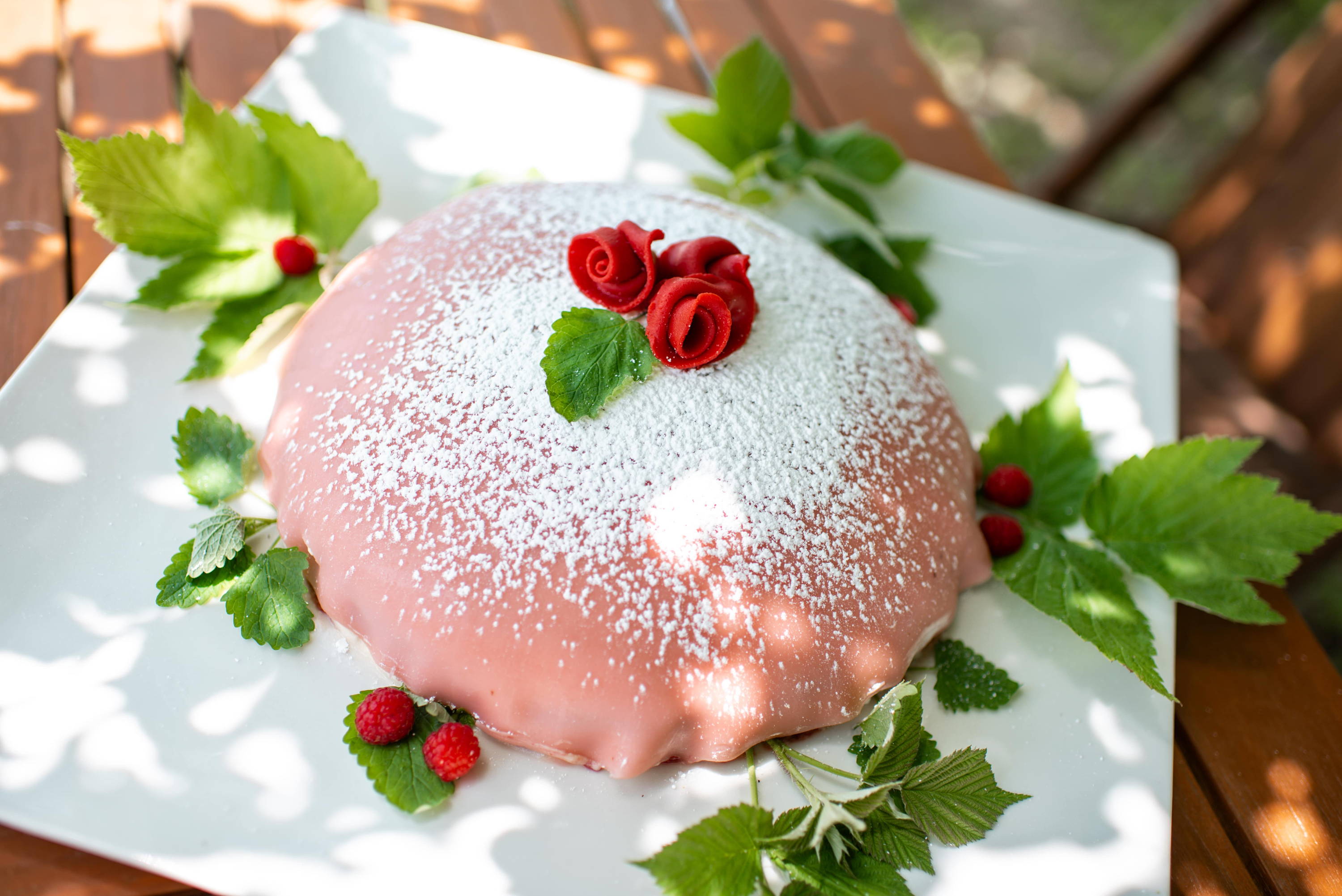We found the original recipe from Jenny Åkerström’s cookbook (which has over 1,000 pages!) on ICA’s website. Unfortunately, the original recipe lacked the recipe for the vanilla cream and the instructions for how to make the sponge cake and marzipan lid (which was truly an almond paste lid back then). This is because those recipes and instructions "could be found on another page in the book," which we don't have access to. Of course, that didn’t deter us. We used some other recipes to piece it all together…though if you have any tips for how to improve the sponge cake instructions, do let us know!
Ingredients
For the Sponge Cake:
- 3 egg yolks
- 110 g (3.9 oz) sugar
- 1 tbsp water
- 25 g (0.9 oz) potato starch
- 25 g (0.9 oz) all-purpose flour
- 3 egg whites
For Filling I:
- 1 vanilla bean
- 1 1/2 dl (5.1 fl oz) milk
- 1 1/2 dl (5.1 fl oz) heavy cream
- 3 tbsp granulated sugar
- 2 egg yolks
- 1 tbsp cornstarch
- 4 dl (13.5 fl oz) heavy cream (40%)
For Filling II:
- 1 dl (3.4 fl oz) heavy cream
- 1 tsp vanilla sugar
For the Marzipan:
- 120 g (4.2 oz) almonds
- 180 g (6.3 oz) powdered sugar
- Egg white
- Green food coloring
Instructions
Prepare the Sponge Cake:
- Preheat the oven to 350°F (175°C). Grease and flour a 9-inch round cake pan.
- Separate the egg yolks from the whites.
- In a large bowl, whisk together the egg whites and sugar until stiff peaks form.
- In a separate bowl, whisk together the egg yolks and water until light and fluffy.
- Gently fold the egg yolk mixture into the egg white mixture.
- Sift the flour and potato starch into the batter and fold it in gently until just combined.
- Pour the batter into the prepared cake pan and bake for 25-30 minutes, or until a toothpick inserted into thecenter comes out clean.
- Let the cake cool completely in the pan before assembling the Princess Cake.
Prepare Filling I:
- Split the vanilla bean lengthwise and scrape out the seeds.
- In a saucepan, bring the vanilla bean, vanilla seeds, milk, cream, and sugar to a boil.
- Whisk together the egg yolks and cornstarch.
- Remove the saucepan from the heat and whisk in the egg yolk mixture a little at a time.
- Heat, stirring constantly, until the custard thickens.
- Pour into a bowl and let cool.
Prepare Filling II:
- Whip the heavy cream with vanilla sugar until stiff peaks form.
Prepare the Marzipan:
- Blanch and peel the almonds, then dry them on paper towels. Grind them very finely in a food processor.
- Add the powdered sugar and egg white and work together until smooth.
- Add more powdered sugar if the dough becomes too moist, or a few drops of water if it becomes too dry and compact.
- Color most of the marzipan slightly green. Color a small piece of dough red.
- Assemble the Cake:
- Cut the sponge cake into three layers.
- Spread the vanilla custard between the layers.
- Cover the entire cake with the whipped cream.
- Roll out the green-colored marzipan on a marble slab into a large round cake and place it over the cake, covering it completely.
- Make a rose from the red marzipan and leaves from the green. Decorate the cake as desired.
Tips:
- For a more tender crumb, use cake flour instead of all-purpose flour.
- The cake will be more moist if the layers are allowed to sit with vanilla cream overnight. But then the cake must be covered and kept in a cold place, otherwise the cream will sour.
- The marzipan can also be made the day before and shaped. This decoration should be covered until it is placed on the cake.
- However, the cream should not be placed on the cake until as close to serving time as possible.
- The decoration can be simplified by omitting the rose bouquet in the middle. The cake is then sifted with powdered sugar just before serving.
